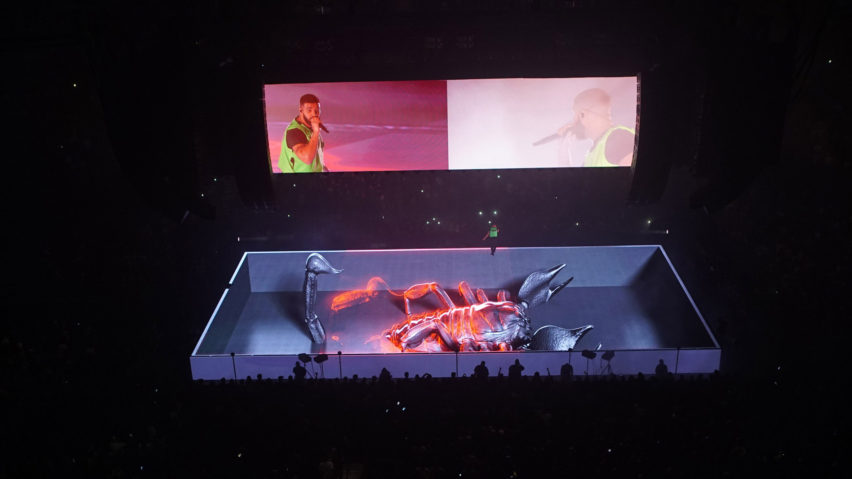
Drake's "super democratic" tour features 200 drones and a flying Ferrari
Two hundred drones, a digital LED floor and a flying yellow Ferrari were among the visual tricks used by creative director Willo Perron in the production of Canadian rapper Drake's latest tour.
Drake's Aubrey & The Three Migos tour – co-headlined by American hip-hop trio Migos – featured a "giant helium drone" that seemingly lifted a yellow Ferrari into the air. Perron told Dezeen it was the first time this had been attempted in an indoor setting.
A digital screen was installed on the floor of the stage that projected videos throughout the set, from a 3D scorpion in a box – a reference to Drake's latest album Scorpion released in June this year – to a projection of a plane of ice, which used motion sensors to "crack" when stepped on.
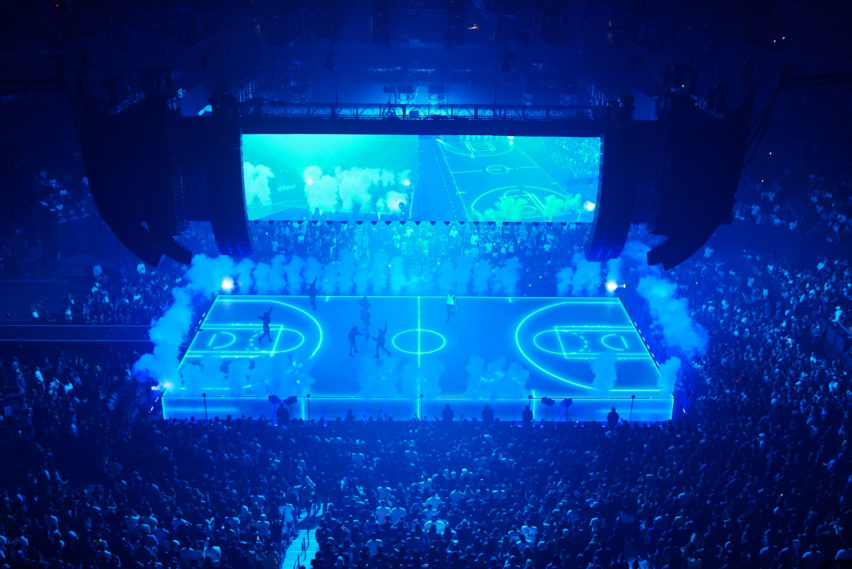
As well as the usual lighting fixtures and pyrotechnics, Perron enlisted 200 drones as additional lighting features above the stage, which created choreographed formations, including a giant rotating cross.
Perron – who has previously worked with Nike and Rihanna, and also designed Kanye West's Yeezy studio in California – oversaw all creative direction on Drake's Aubrey & The Three Migos tour. It took place between 12 August and 18 November.
His role included developing the initial concept for the show and the set design, as well as "all the other stuff that goes along with it".
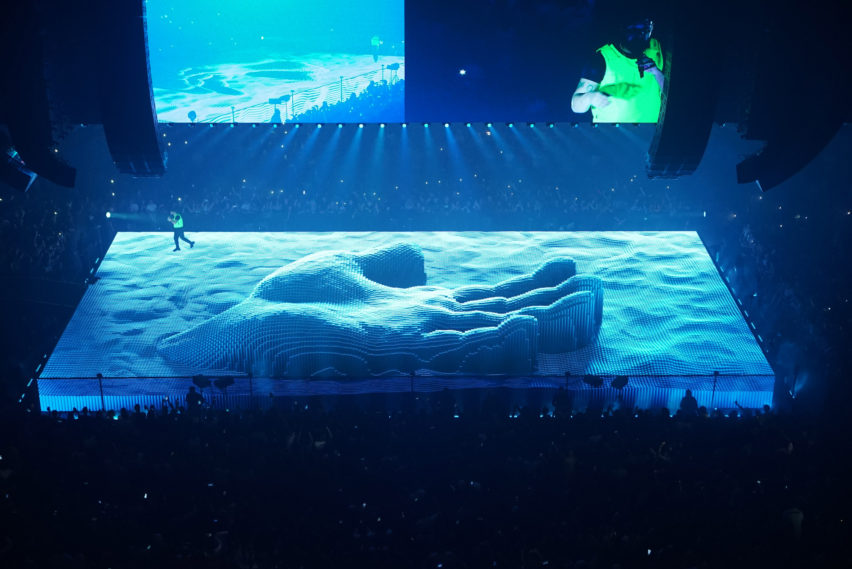
Taking inspiration from the layout of a basketball court, the audience was positioned on all four sides of the stage, rather than a traditional end-stage layout, where the audience is located at the front only.
"It is a better fan experience. It's a much more immersive experience for the audience, which makes for a better show," Perron told Dezeen.
"It's basically all a giant front row"
The aim was to ensure that the show was as effective for audience members at the back of the venue as those in the front row.
"The show is super democratic. If you sit in the seats, you'll have a great visual thing, and if you're on the floor, you'll have a great connection," he said.
"It's basically all a giant front row. In a traditional show, you have maybe 100 people in the front row, whereas this is a couple of thousand," he explained.
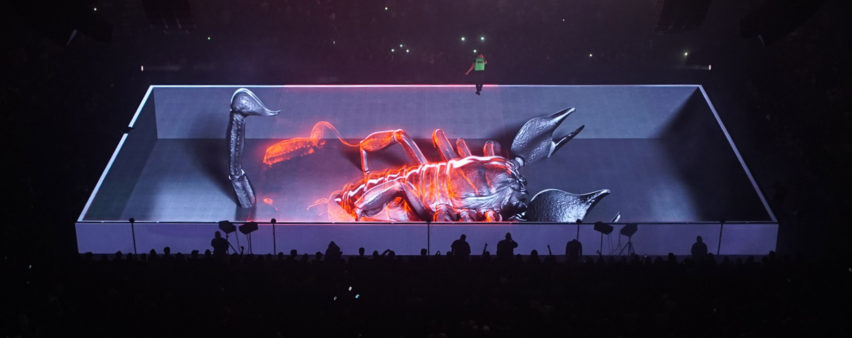
Each track in the show was accompanied with videos made by Perron, ranging from straightforward clips of bubbling molten lava to more intricate projections of a 3D hand coming out of the ground. These were displayed on a digital screen that spanned the entirety of the stage floor.
Perron made 3D illusion visible from four angles
The video for the track Nonstop featured a digital 3D rendering of a scorpion in a box. A key challenge for Perron was to make a 3D illusion that could be viewed from all four vantage points.
"Typically, when you do 3D effects, you can only view them from one vantage point, which is directly in front. The challenge was to see how we could achieve the 3D effect for all four vantage points," said Perron.
Perron achieved this by making the image rotate across different vantage points to give the illusion of three-dimensionality.
"The 3D effect rotates across the different angles and cycles through them. It can look a little bit flatter but during the sequence of the show, the audience doesn't really notice it – it's all perception," explained Perron.
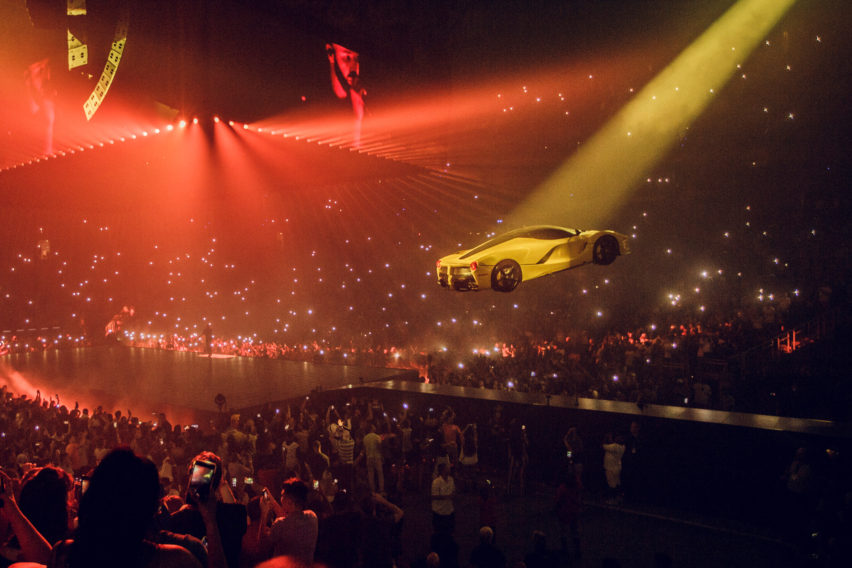
Motion reactors were also used to create reactive content on the stage floor. One track saw Drake walk across a video of ice that appeared to crack as he stepped on it, while in another, squares lit up underneath the rapper, intended as a tribute to Michael Jackson's music video for track Billie Jean.
Drake wore a small, "mobile phone-sized" motion detector that tracked his movements and fed them back to motion sensors installed on stage.
Perron's team created a foam replica of a Ferrari
A memorable moment of the show, which ran the entirety of 15 songs labelled the Sting Section, saw the yellow Ferrari fly across the stage.
A real car could not be used for safety reasons. Instead Perron and his team created a foam replica, which they filled with a giant helium balloon and supported by a fleet of tiny drones that were controlled by special engineers off-stage.
"I found a drone company that makes things for corporate events and thought, 'This would be great to use in Drake's show'. I showed it to him and he was like, 'Well I just bought this yellow Ferrari, can we make it fly?'" said Perron.
"The entire shell and underbelly of the car are empty and it's basically a huge helium balloon and it has tiny propellors supporting it but you can't see them because they're spinning so fast that the human eye can't register. It's basically a giant helium drone," he explained.
"Piece of technology that's never been used before"
"It was a piece of technology that's never been used before, and it doesn't require any wires, and you can fly it over people's heads. It is actually pretty elementary," he continued.
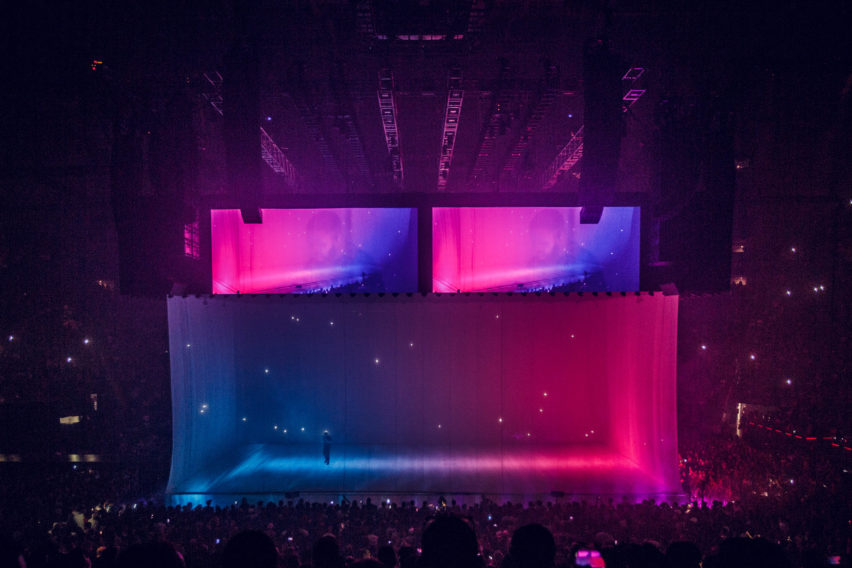
The 200 drones offered additional lighting. For the track Look Alive, these same drones were choreographed to form a giant, rotating cross in the sky.
"We've seen drones used in the Olympics where they deployed a few hundred drones to form the five interconnected rings but we're still in the early days, it's very much a gag at this point," Perron told Dezeen.
"When the battery packs get smaller and the intensity of the lights get higher, we can use them more in shows. The first iterations are still a bit clunky and archaic-looking," he said.
"At this present time, it's still super limiting what you can do with it. You can't fly it right over people's heads. They are light but there's the danger of crashing into the audience and hurting people."